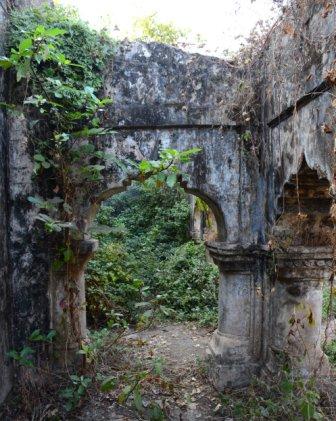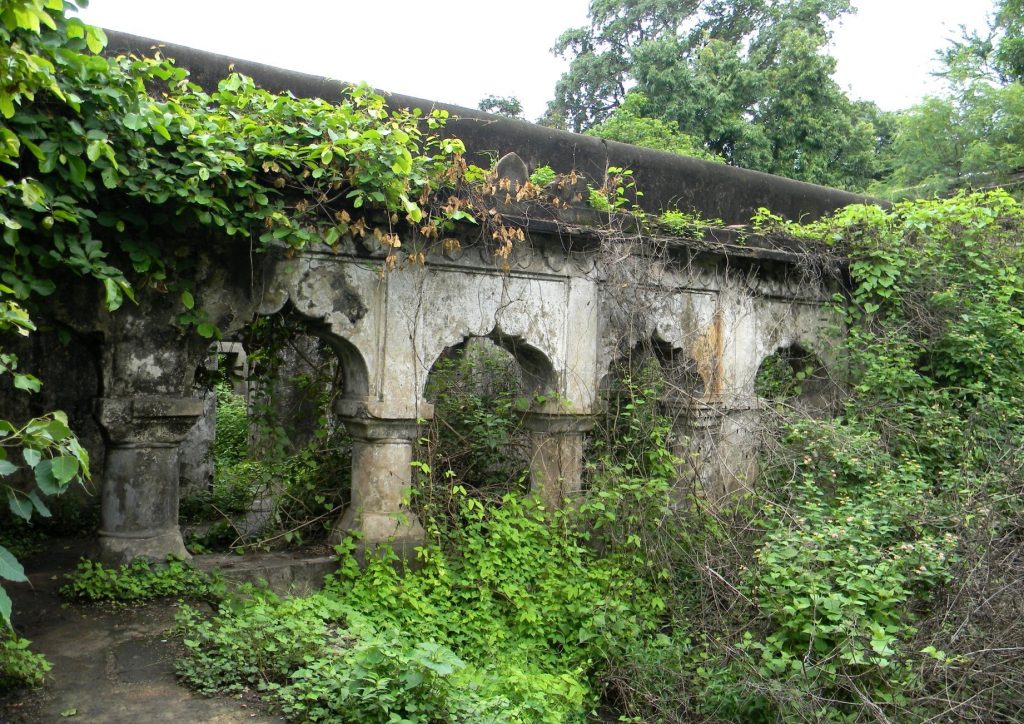Sambalpur: Sambalpur town houses historically famous Dasamahavidya Mahal, also known as Raja Bakhri (king’s palace).
This monument stands testimony to several historical events in the town of western Odisha. However, Raja Bakhri is left in a sorry state. Walls and ceilings lying broken and creepers running wild all over them speak volumes about the monumental neglect to the place.
Over years, the government has not taken note of its maintenance and preservation. Raja Bakhri is spread over 0.93 decimal of land near Kunjelpada Chhak.

The old palace consists of 30 chambers while one is known as Rani Uas (queen’s place) complete with a verandah and a yard.
The ceiling of one of the chambers is safe and its Sukla paintings are intact. Sadly, major parts of the palace are tottering on the brinks.
Many residents observed that if the king’s place is restored, olden artifacts can be conserved. The place can be developed into a tourism centre with the facility of a park, they added.
As the sun sets down, anti-social elements throng here. Besides, many people have encroached upon parts of Raja Bakhri.
In the early parts of 17th century, Maharaj Chhatra Sai had got the two-storied Dasamahavidya Mahal built.
By 1852, the place had been abandoned as the Sambalpur royals had no inheritor to look after the kingdom.
Later, the royal properties were entangled in disputes after small kings, landlords and some gontias of Sonepur, Barpali and Jharsuguda staked their claims on the royal property. They moved the court.
The royals of Sonepur won the legal battle on the property and sold it to their counsel Nityananda Majhi.
The people of Sambalpur were culturally attached to the royal palace. They sought to reclaim the property.
The place could be developed as a tourist site. Unfortunately, nothing has been done to preserve and protect the historical monument,’ some locals lamented.
They demanded that urgent measures were needed to preserve the monument while a park is needed to attract people and highlight the palace.
They pointed out that people from across the state come to Sambalpur to visit Samaleswari temple, Ghanteswari Pitha, Huma temple and Hirakud dam. If this historical monument is renovated, tourists will get an opportunity to know about the history of this old city. The local municipality or the Sambalpur Development Authority should take the responsibility to preserve the structures, others said.
It may be noted here that the education department reclaimed the property September 25, 1962 by paying compensation.
Nityanada alleged that the compensation was too meager and moved the court. The court came out with an order March 9, 1974, directing the government to pay Rs 1.63 lakh to Nityananda.
Due to the protracted legal battle, the education department took no steps to pay the compensation. As a result, the palace was left to wallow in neglect and reduced to ruins. Valuable assets and articles were stolen.
According to history, Veer Surendra Sai and his brother Udant Sai had escaped from Hajaribag jail and reached Sambalpur.
He and his brother stayed in this palace for a few days. Sai came to Sambalpur October 7, 1857 with 1500 supporters and the British government did not dare to stop him. He stayed at Raja Bakhri during that period. Freedom fighters had waved the national flag from the Raja Bakhri here during the freedom movement.
While the Quit India Movement was at its peak, freedom fighters waived flags at the façade of the place in August 1942, giving an open challenge to the British government.
Raja Bakhri is witness to many historical events. Considering its glorious history, the state archeological department carried out some restoration work of the place at cost of Rs 1 lakh in 2001. However, no follow-up work was taken up.
Later, Sambalpur Press Club and some other cultural outfits cleaned the palace.
In 2016, a technical team – Intach conservation head Jive Gupta, Intach state head Mallika Mitra, Amiya Bhusan Tripathy – took stock of the possible conservation measures, restoration of old paintings and peripheral development.
Rs 7 lakh was spent on restoration of a ceiling of one chamber. Intach had prepared a DPR for its restoration with an estimated cost of Rs 3 crore.
The tourism department carried out restoration of Rani Bakhri at Kamali Bazar at a cost of Rs 1 crore. But the Raja Bakhri has been left in ruins, locals rued.
PNN
